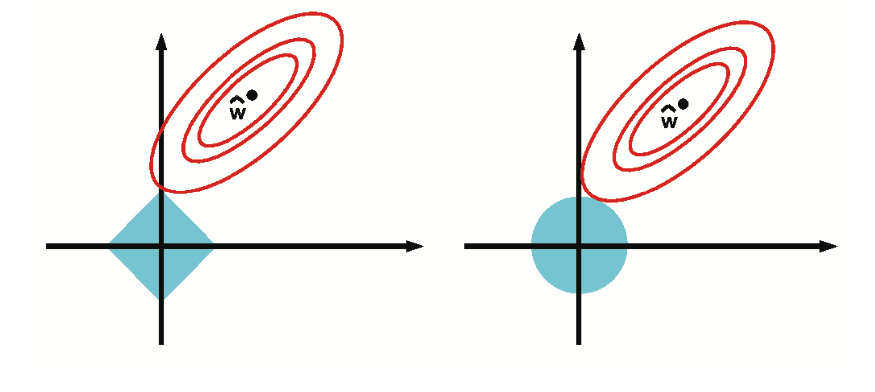L1 regularization sparse solution¶
We can write the objective function:
as a constraned but smooth (quadratic function with linear constraints):
\(B\) is an upperbound on the \(l_1\) norm of the weights
This form is allso known as the lasso which stants for least absolute shrinkage and selection operator.
If we compare it to ridge regression:
And plot the contours of the \(l_1\) and \(l_2\) constraint surface:

From the theory of constrained optimization, we known that the optimal solution occurs at the point where the lowest level set of the ojbective function intersects the constraint surface. Hence as we relax the constrained B, we grow \(l_1\) ball until until it meets the objective; the corners of the ball are more likely to intersect the ellipse than one of the sides, especially in high dimensions, because the corners “stick out” more. The corners correspond to sparse solutions, which lie on the coordinate axes. By contrast, when we grow the \(l_2\) ball, it can intersect the objective at any point; there are no “corners”, so there is no preference for sparsity
We can also compare two possible solution:
Now \(w_1\) is obviously sparse and \(w_2\) is not but if we compare the \(l_1\) and \(l_2\) norms we get:
The \(l_2\) norm $\( ||(1,0)||_2 = ||(1/\sqrt{2}, 1/\sqrt{2})||_2 1 \)$
The \(l_1\) norm:
